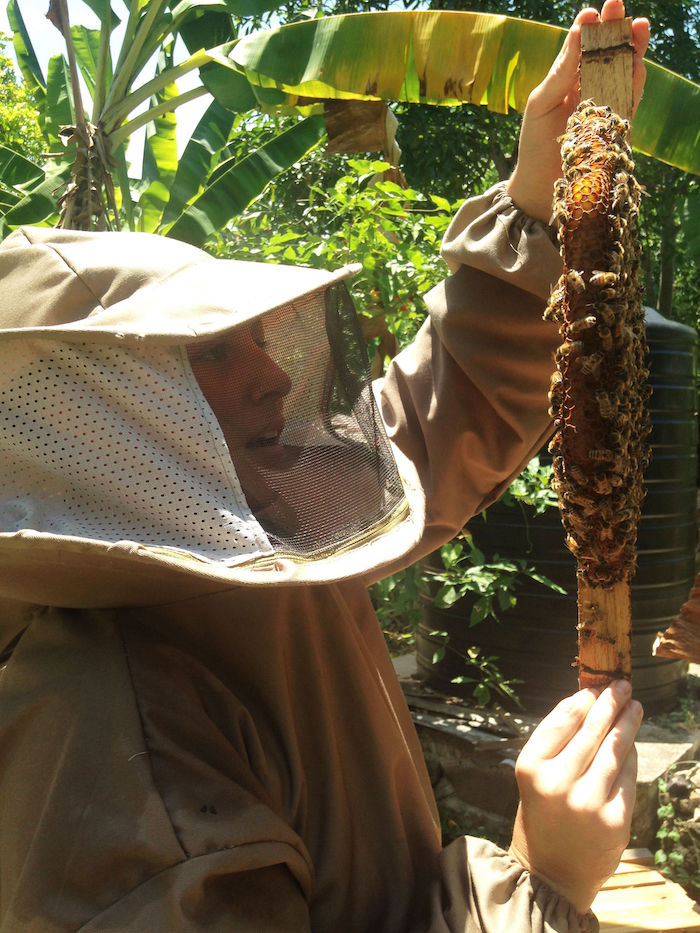CSUMB Magazine
Love at First Sting

Rebecca Ortega was a little scared of bees when she set off for a summer internship in Jamaica, where she wound up caring for 100 beehives. The environmental studies major from Placerville wanted to see firsthand what life on a small self-supporting farm was like. “It was outside my comfort zone, but I knew bees were having problems and I wanted to learn about it,” she said.
Mysterious phenomena
As pollinators, bees play an important role in agriculture and natural ecosystems. However, both native and honey bee populations have been declining in recent years due to pesticide use, habitat loss, parasites such as the invasive varroa mite, and Colony Collapse Disorder, a mysterious phenomena in which the majority of worker bees disappear from the hive, abandoning the queen.
Ortega spent six weeks at Yerba Buena Farm in St. Mary, Jamaica. She lived on site with Agape and Kwao Adams and their six sons, and helped tend their hives, orchards, gardens and livestock. The Adams use a style of beehive called “top-bar” which minimizes the beekeeper’s disruption of the hive. This technique means the bees are easier to work with and less likely to sting.
“After six weeks and checking on 100 hives I was only stung four times, and two of those were definitely my fault. It had taken a week to get my first sting, and it truly wasn’t as bad as I was expecting,” she said.

While she and the bees got along fine, 10 days into the experience she slipped on a mango, fell and broke her leg. But even that didn’t stop her from checking hives, harvesting honey, helping to assemble and paint new hives, and developing a passion for beekeeping that she brought back to the United States.
She now hopes to establish a hive at CSUMB so that she can spread her love of bees and beekeeping to her fellow students – and anyone else on campus who might want to learn.
Her proposal gained support from the CSUMB garden and sustainability clubs, as well as the Campus Sustainability Committee. The proposed hive also got the blessing from the Watershed Institute, which will host it in a 15’x15’ fenced parcel near the CSUMB garden club’s plot.
The Monterey Bay Aquarium agreed to donate one of its hives in exchange for a percentage of honey the hive produces to be used in the Aquarium’s cafe. Charles Wesley, the general manager for campus dining, is also interested in using the honey for campus food services.
Campus beekeeping
Eventually, Ortega envisions the campus having several hives that can generate income from honey, and perhaps other products such as cosmetics or candles made from beeswax. Several business students have expressed interest in this aspect of campus beekeeping.
Ortega plans to have the hive in place before the end of the semester, and will tend it over the summer and through next fall, when she’s slated to graduate. She hopes other students will get involved and learn how to care for the bees in the meantime.
“My major is all about working with people to solve environmental problems,” Ortega said. Establishing the hive at CSUMB is one way to get people engaged with protecting bees and understanding their role in the environment. “Anyone who wants to see the hive and learn about beekeeping should contact me,” she says. “Wannabees” can get in touch by emailing rortega@csumb.edu.